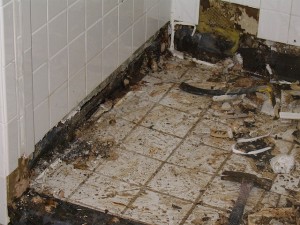As this is a site dedicated to information about Radon, naturally it’s the topic we discuss most. However, radon is not the only silent killer that could be lurking in your home. There are plenty of other dangers that can cause issues with your health, including carbon monoxide, natural gas leaks, fungi, mold and bacteria.
Today, we’re going to take a quick peek at some of the other silent killers like radon.
Silent Killers Like Radon
Carbon Monoxide – This deadly gas is responsible for claiming the lives of more than 4,000 Americans every year. It is an invisible and odorless gas that is produced when appliances like your fireplace, water heater or furnace burn improperly. It can quickly fill a home, before any residents notice a problem. Symptoms associated with exposure include headaches, nausea, dizziness, fatigue, shortness of breath, unconsciousness and even death.
The only way to detect the presence of CO is to test the air inside a home for it, similar to radon. As such, several states have passed legislation that requires carbon monoxide detectors to be used in new homes.
Gas Leaks – Gas can leak into the home through one of several different appliances such as a stove or heater. As a result, this can lead to severe asphyxiation. If enough gas builds up inside a residence it can cause a dangerous explosion – most natural gas is highly flammable.
Generally, commercial gases used for fuel often give off a strong odor or smell. In the event that you do smell gas, leave the home immediately and contact the authorities. If you cannot leave for some reason, open any and all windows or doors to the outside and refrain from using anything electrical – even lights.
Fungi or Mold – Fungi and mold can build up inside a home to create what is called the Sick Building Syndrome (SBS). Mold and mildew can grow in the foundations, walls, and under carpets. All it takes is for various building materials to become wet, and stay damp for an extended period of time without being properly cleaned.
A heavily infested home can cause symptoms such as eye, nose and throat irritation as well as headaches and fatigue. The Centers for Disease Control reports that SBS can cause serious health issues for the following groups of people.
- Infants and children
- The elderly
- People with asthma, allergies, or respiratory conditions
- People with weakened immune systems
Some signs that you may have a mold or mildew problem in your home are stained ceilings, a lingering musty smell, colored spots on the wall, leaky pipes and more.
Get Help Immediately
If you suspect one of these killers may be lurking in your home seek help immediately. There are several different places you can go to find more information including the Centers for Disease Control and the Environmental Protection Agency.



